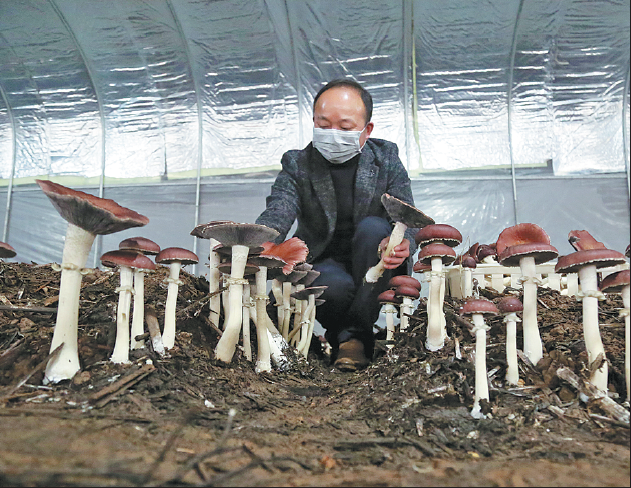Industry sprouts from rotting reeds


Dongting Lake mushroom growers find a fresh way to utilize natural resources
CHANGSHA-Rotting reeds, once considered a scourge in Yuanjiang, Hunan province, are now the basis of a flourishing new industry in the city-mushroom cultivation.
"These high-quality mushrooms are worthy of promotion, given the abundant reed resources here," said Wu Zhengkun, deputy director of the Edible Fungi Research Institute at Hunan Agricultural University.
Tasty, nutritious and high-yield mushroom varieties grow on the residue of the reeds and have become a cash cow for residents. Using the reeds for commercial gain has also helped solve an environmental problem around Dongting Lake, China's second-largest freshwater lake.
The reeds have historically played a key role in the local economy. For years, paper mill operators across China envied their peers based around Dongting for their seemingly inexhaustible supply of reeds in the wetland. As an alternative to timber, low-cost reeds provided the perfect raw material for high-quality pulp and helped curb deforestation.
However, that "natural advantage" turned out to be an ecological threat. As paper production accelerated, millions of liters of toxic waste were discharged into the environment every year.
In 2018, local authorities ordered that papermaking, a mainstay of the local economy, stop and all paper and pulp mills around Dongting Lake closed by the end of last year. The closure of the Yuanjiang paper mills came amid a nationwide campaign to eradicate environmental threats.
What was intended as a blessing for the environmental health of the lake was a disaster for mill workers who suddenly found themselves laid off. Despite a government pledge to solve the unemployment problem, few of the mill workers wanted a job in a new industry.
The shutdown of the papermaking industry also created an unexpected problem. After losing their commercial value, about 90 percent of the reeds rotted on the lake's shore, causing eutrophication with high nutrient concentrations stimulating excess algae growth. That, in turn, affected the wildlife of the lake.
























